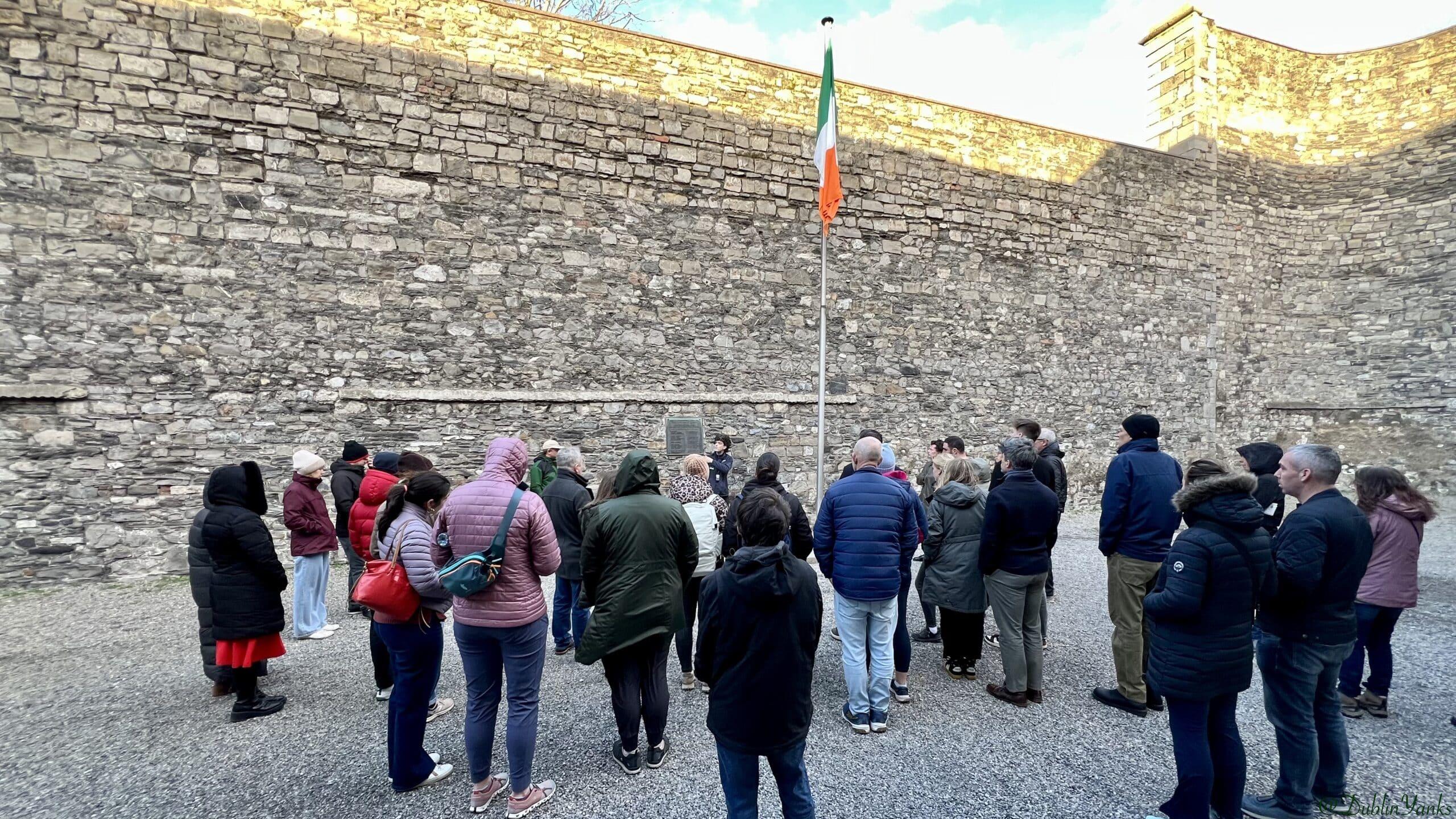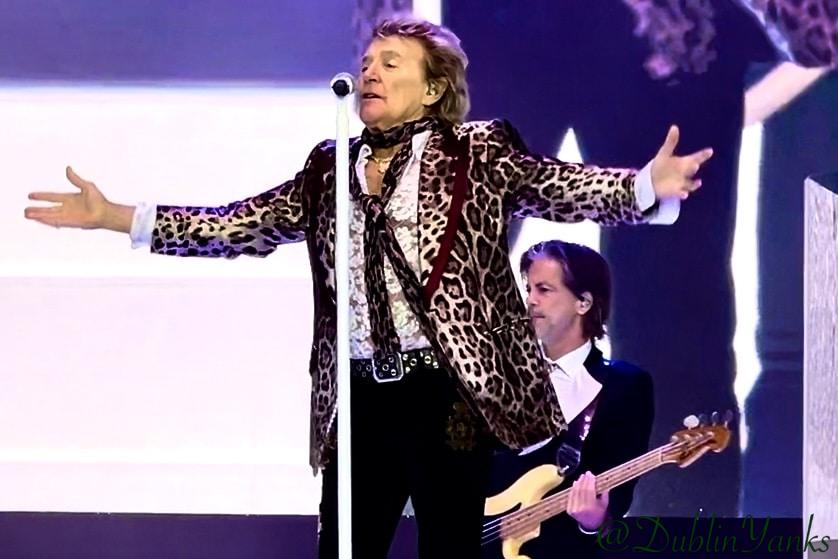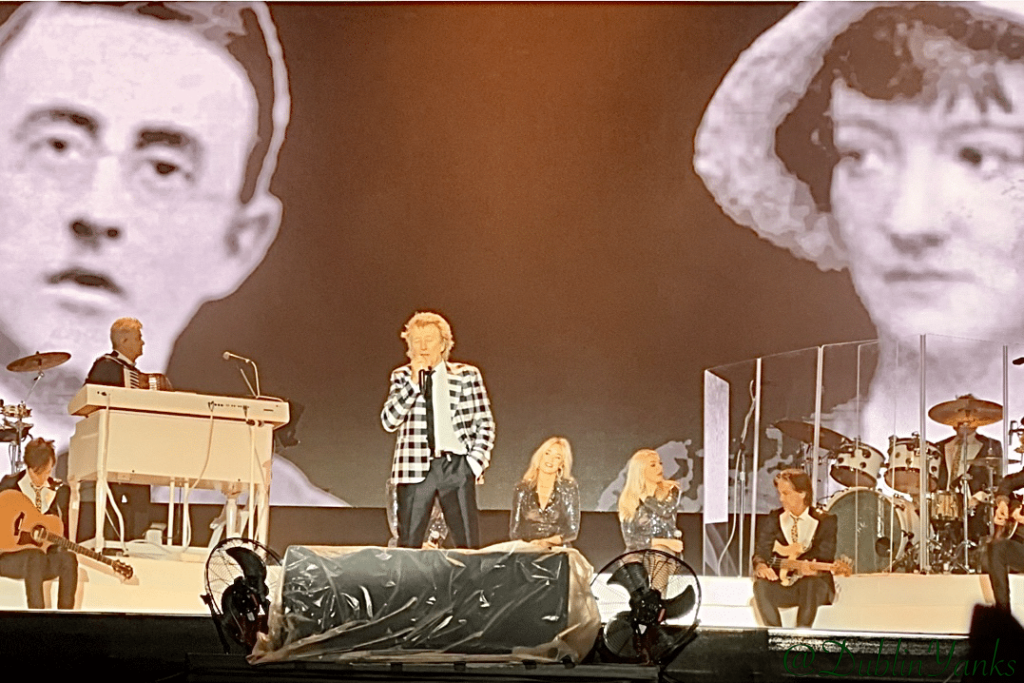Estimated reading time: 5 minutes
Kilmainham Gaol, opened in 1796, housed many of Ireland’s revolutionary figures. These included leaders of the 1916 Easter Rising, several of whom faced execution within its walls. The famous song “Grace,” performed by Rod Stewart, pays tribute to one such leader’s fiancée, Grace Gifford. Rod Stewart’s rendition of “Grace” highlights poignant connections to Ireland’s past. Its stark cells and haunting history provide a gripping window into Ireland’s struggle for independence. For anyone seeking raw, emotional insight into the nation’s past and its role in shaping modern Ireland, it’s a must-visit.

Purchase tickets online 28 days in advance — they sell out almost instantly. This is why it is on my list of one of the five things to book in advance. Therefore, set your alarm and act quickly—precisely at midnight Irish time on the 28th day before your planned visit. The gaol is chilly. It wasn’t built for comfort. It is mostly a walking tour. This makes it an invigorating start to a Dublin trip—perfect for shaking off jet lag by keeping your blood pumping.l
Kilmainham Gaol Tour
During a brief history lesson, you’ll get a few minutes off your feet in the prison chapel. There, you will sit where Grace Gifford married Joseph Plunkett on the night of May 3, 1916—just hours before Plunkett’s execution by firing squad for his role in the Easter Rising. Consequently, this event left a lasting mark in the tale of Rod Stewart, Grace, and Ireland.
In 1985, brothers Frank and Seán O’Meara wrote a poignant song, “Grace,” about this tragic love story. It captures the fleeting union of Gifford and Plunkett in Kilmainham Gaol. This tale resonates deeply with Irish history and is immortalized by Rod Stewart’s rendition.
My favorite rendition of “Grace” comes from Rod Stewart, the legendary British rock singer-songwriter. He called it “one of the greatest love songs ever written.” Moved by its power, Stewart recorded his own version for his 2018 album *Blood Red Roses*. The album peaked at No. 2 in the UK and No. 62 on the Billboard 200. When I heard he was performing across the street from the Gaol, on the grounds of the Royal Kilmainham Hospital (home of the IMMA, the Irish Museum of Modern Art), I knew I had to be there.
Stewart’s affection for Ireland runs deep, rooted in both cultural appreciation and his devotion to Celtic Football Club. Brother Walfrid, an Irish Marist monk, founded Celtic in 1887 to support poor Irish immigrants in Glasgow’s East End.. Stewart’s connection to the club—and, by extension, Ireland—began in 1973 while touring Glasgow with The Faces. Since then, he has risen to fame as Celtic’s most notable supporter. He frequently appears at Celtic Park, decked out in green and white. He even owns a home in Dublin’s Ballsbridge.
Rod Stewart on RTE
On March 13, 2019, while in Dublin to record an interview for RTÉ’s The Late Late Show, Stewart explored Glasnevin Cemetery, where Grace Gifford-Plunkett rests. The Dublin South 1916 Centenary Committee shared a photo of him at her grave, highlighting her significance in the song “Grace” which Rod Stewart performed. Reports from *The Scottish Sun* and *Irish Central* suggest he sang the song graveside. Though it’s unclear if this was a formal performance or a private moment. The image of him there, paired with his passion for the song, fueled the story. On *The Late Late Show*, aired March 15, 2019, he spoke emotionally about “Grace,” the Rising, and his visits to Glasnevin and Kilmainham Gaol. He teared up when presented with a first-edition book of Plunkett’s poetry signed by Grace.
Stewart returned to Glasnevin on December 7, 2019, before two Dublin concerts. He laid roses on Grace’s grave, as reported by *The Irish Post* and the Centenary Committee. Though it’s not confirmed he sang “Grace” this time, his earlier visit and habit of performing it—whether at Celtic matches or his 2018 Las Vegas residency—suggest he might have sung it quietly again.
Rod Stewart at Kilmainham and Glasnevin
Irish Post: Stewart lays flowers at Grace Gifford-Plunkett’s grave
In a 2-minute RTÉ One YouTube clip from the 2019 Late Late Show interview, Stewart recalls first hearing “Grace” at a Scottish Cup Final with Celtic fans. He shares his emotional connection to it, including his visits to Kilmainham Gaol and Glasnevin. This song connects Rod Stewart, Grace, and Ireland’s history.
In May 2024—the same month Gifford and Plunkett wed—Stewart performed at a rain-soaked outdoor concert on the back lawn of the Royal Hospital Kilmainham (home to IMMA, the Irish Museum of Modern Art), adjacent to the gaol. Before singing, he turned silently toward the prison chapel. I was there, standing in the mud, and captured the moment on my iPhone as the crowd sang along. It’s a memory I’ll never forget. This event links Rod Stewart, Grace, and Ireland in my mind.

The story of Stewart singing “Grace” at Glasnevin blends documented visits with his vocal devotion to the song. Whether he belted it out or hummed it softly, it’s a striking image: a rockstar honoring a rebel’s widow in a place steeped in Ireland’s past.
Discover more from Dublin Yanks: American Travel Tips for Visiting Ireland
Subscribe to get the latest posts sent to your email.
